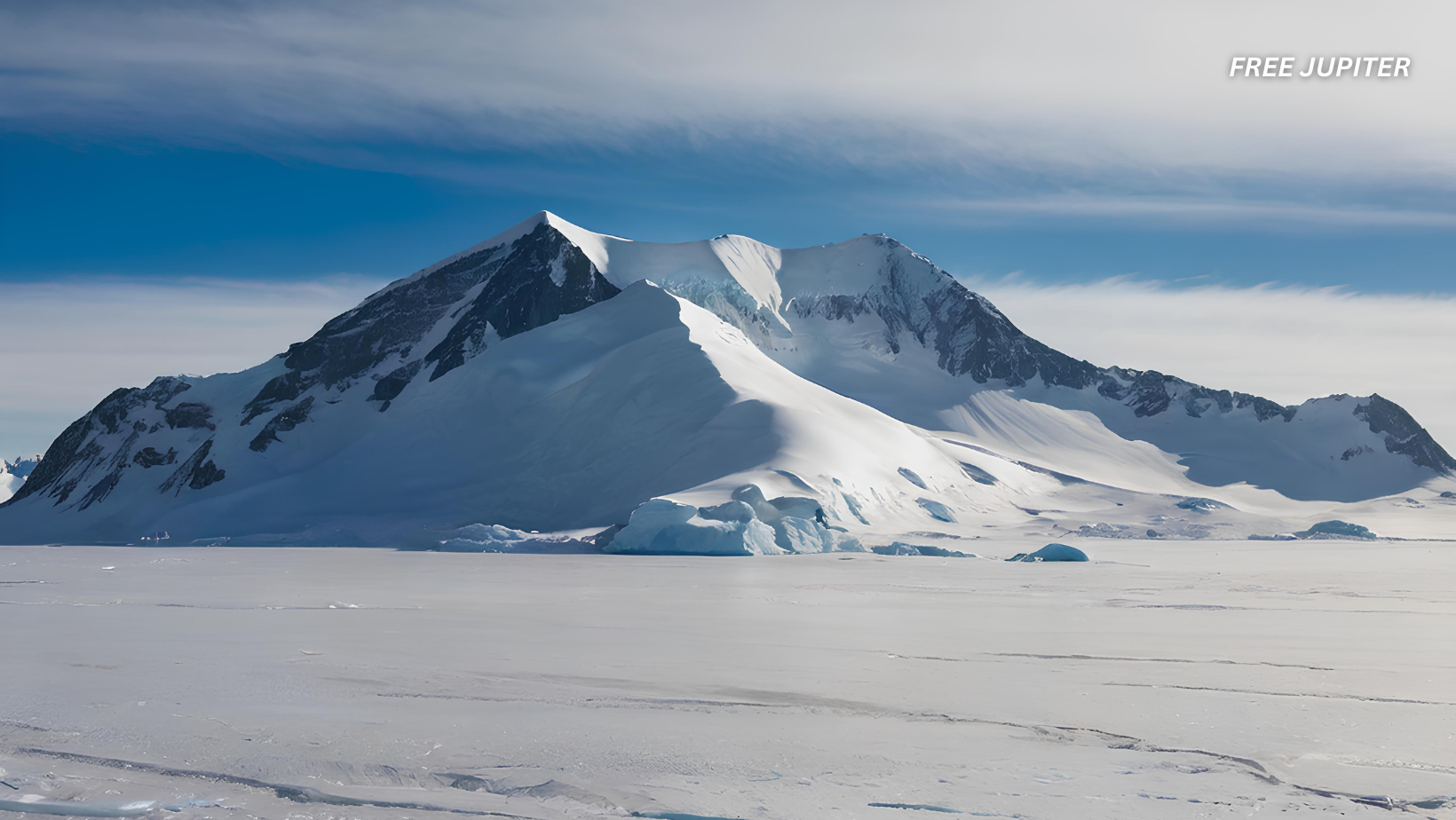Friendly Note: FreeJupiter.com shares general info for curious minds 🌟 Please fact-check all claims—and always check health matters with a professional 💙
Beneath the seemingly endless ice sheet that cloaks Antarctica lies one of the planet’s most enigmatic geological wonders: a vast mountain range hidden from view for millions of years. This concealed massif, known as the Gamburtsev Subglacial Mountains, stretches roughly 1,200 kilometers across East Antarctica, rivaling the European Alps in both size and ruggedness. Yet unlike familiar mountain ranges that rise boldly into the sky, the Gamburtsevs remain completely buried beneath kilometers of ice, their towering peaks and deep valleys locked away beneath a frozen veil.
The discovery of this “ghost range” in 1958 by a Soviet seismic expedition stunned scientists, who had long assumed the continent’s interior bedrock was relatively flat and uneventful. The existence of such an extensive mountain chain beneath the ice sheet presents a geological puzzle: how could these mountains have formed and endured in the heart of a continent that has been tectonically stable for hundreds of millions of years?
Recent research has begun to unravel this mystery, revealing that the Gamburtsev Mountains originated more than 500 million years ago during the assembly of the ancient supercontinent Gondwana. This colossal tectonic event, driven by the collision of landmasses that would eventually become Africa, South America, Australia, India, and Antarctica, triggered the uplift of the range. Unlike younger mountain belts still shaped by active plate collisions, the Gamburtsevs have remained remarkably preserved beneath the ice, shielded from erosion and other surface forces.
Understanding the origins and preservation of the Gamburtsev Mountains not only sheds light on Earth’s deep geological history but also offers clues about the birth of the East Antarctic Ice Sheet itself. Scientists believe that these mountains played a crucial role in initiating the growth of the continent’s vast ice cover, influencing climate and environmental conditions over millions of years.
As exploration efforts continue, combining airborne geophysical surveys and analysis of ancient mineral “time capsules,” researchers are piecing together the complex story of this hidden range. The Gamburtsev Mountains stand as a testament to the dynamic processes that have shaped our planet’s continents and climates, quietly preserved beneath Antarctica’s frozen surface, waiting to reveal their secrets.
Read more: Newly Recovered Data From ‘Dead Satellite’ Reveals A Lost Continent Hidden Beneath Antarctica
Unveiling a Mountain Range Frozen in Time
The Gamburtsev Mountains first came to light during a Soviet seismic survey in 1958, revealing an extensive range hidden beneath the continent’s thick ice sheet. Unlike many mountain ranges visible on Earth’s surface, these peaks are entirely cloaked by ice, making direct study a formidable challenge. Their existence has long puzzled geologists because they reside in a region of Antarctica that has been tectonically quiet for hundreds of millions of years, a stability that typically precludes the formation of such dramatic mountain landscapes.
Most mountain chains arise where tectonic plates collide, pushing the Earth’s crust upward. The Himalayas, for example, continue to grow as the Indian plate presses against the Eurasian plate, a process that began about 50 million years ago. However, East Antarctica’s interior shows no signs of recent tectonic upheaval, prompting scientists to investigate how the Gamburtsev Mountains came to be and why they have endured.
The Ancient Origins of the Gamburtsev Mountains
Recent research, published in Earth and Planetary Science Letters, sheds light on the birth of this enigmatic range. The study traces the mountains’ origins back more than 500 million years to the formation of the supercontinent Gondwana. This supercontinent brought together landmasses that now form Africa, South America, Australia, India, and Antarctica through the collision of tectonic plates.
Models of plate tectonics suggest that the crust beneath East Antarctica was once part of at least two large continents separated by a vast ocean over 700 million years ago. The collision of these landmasses triggered intense geological activity, pushing up the Gamburtsev Mountains. During this mountain-building phase, the crust thickened and heated, eventually becoming unstable under its own weight.
A process called gravitational spreading then took place deep underground. Hot, partially molten rock began to flow sideways beneath the mountains, somewhat like toothpaste squeezed from a tube. This caused the mountain range to partially collapse, yet a thick crustal “root” remained intact, extending deep into the Earth’s mantle. This root has helped preserve the mountains beneath the ice for hundreds of millions of years.
Read more: Iceberg Breaks Off Of Antarctica, Revealing Strange Tentacled Creatures Hidden Underneath
Time Capsules in Crystal Form
To piece together the timeline of these ancient events, scientists studied tiny zircon crystals found in sandstone deposits from rivers that once flowed from the Gamburtsev Mountains over 250 million years ago. These zircon grains act as natural timekeepers because they contain uranium, which decays at a known rate, allowing precise dating.
Analysis revealed that the Gamburtsev Mountains began rising around 650 million years ago, reached heights comparable to the Himalayas by about 580 million years ago, and experienced significant crustal melting and flow until roughly 500 million years ago. This timeline aligns with the formation of Gondwana and supports the idea that the mountains are remnants of an ancient tectonic collision.
An Exceptionally Preserved Mountain Range
Most mountain ranges formed by continental collisions are gradually eroded or reshaped by subsequent tectonic activity. The Gamburtsev Mountains are unique because they have been preserved beneath a thick ice sheet, which has shielded their rugged peaks and deep valleys from erosion. This makes them one of the best-preserved ancient mountain belts on the planet.
Direct sampling of the mountains is difficult and costly due to the ice cover, but recent fieldwork near the Denman Glacier on the coast of East Antarctica has uncovered rocks that may be linked to the Gamburtsev range. Further study of these samples will help scientists better understand the hidden geological framework beneath the ice.
Read more: Scientists Trapped in Antarctica Plead For Help as Violence Breaks Out At Base
Antarctica’s Geological Mysteries Continue
The discovery and ongoing study of the Gamburtsev Mountains offer valuable insights into how continents and mountain ranges evolve over geological time. They also explain why East Antarctica has remained remarkably stable for hundreds of millions of years, despite the dramatic forces that shaped its hidden landscape.
As exploration technologies improve, the secrets locked beneath Antarctica’s ice are gradually coming to light, revealing a continent far more dynamic and complex than its frozen surface suggests. The Gamburtsev Mountains stand as a testament to Earth’s ancient past, preserved in ice and waiting to tell their story.
This remarkable mountain range beneath Antarctica’s ice not only enriches our understanding of Earth’s geological history but also highlights the enduring mysteries that still lie beneath the planet’s most remote regions.










